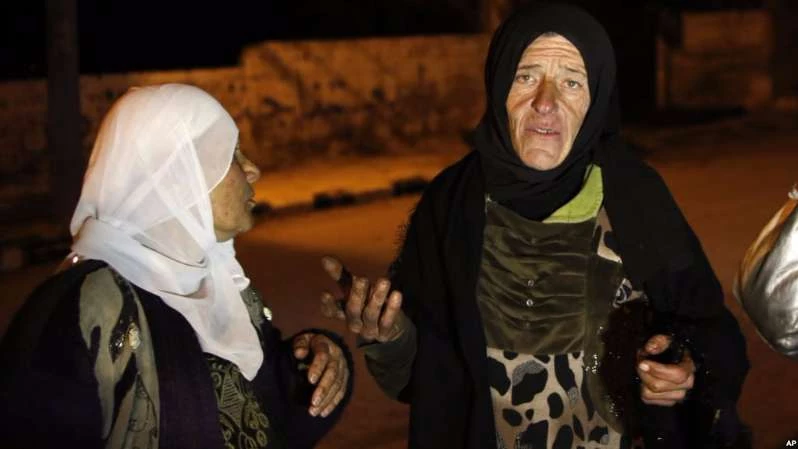The new Siege Watch report, issued today by the Netherlands-based nonprofit PAX and the Washington-based Syria Institute, comes a month after images posted online of emaciated children and adults led to an international outcry and rare convoys of aid to a handful of Syrian communities.
The town featured in the images, Madaya, was not listed by the U.N. as a besieged community at the time. Aid workers who entered last month reported seeing skeletal people and parents who gave their children sleeping pills to calm their hunger.
The Siege Watch report says 1.09 million people are living in 46 besieged communities in Syria, far more than the 18 listed by the U.N. It says most are besieged by the Syrian government in the suburbs of Damascus, the capital, and Homs. In the eastern city of Deir el-Zour, about 200,000 people are besieged by both the Islamic State group and the Assad regime. The report lists two communities besieged by armed opposition groups.
"Electricity and running water are usually cut off, and there is limited (if any) access to food, fuel, and medical care," the report says. Deaths have been reported from malnutrition, disease, hypothermia and poisoning while scavenging for food. Some communities have been besieged for months or years.
The estimates are based largely on information provided by local contacts in the communities, including local councils, medical workers and citizen journalists.
With the spotlight on the besieged, the United Nations last month raised its estimate by almost 100,000, saying that 486,700 people are affected.
That’s still less than some aid groups and others estimate. They argue that the world body’s numbers set the tone for humanitarian response efforts and that more urgency is needed.
"Many remain unaware of the extent of the crisis, and the international response has been muted as a result," the Siege Watch report says.
In meetings this week with U.N. officials and member states, PAX says it will call for the immediate lifting of sieges as a way to build confidence in the peace talks.
The U.N. says it considers an area besieged if three criteria are met: The area is surrounded by "armed actors," humanitarian aid cannot regularly enter, and civilians, including the sick and wounded, cannot enter and exit.
"Of course, differences of opinion do occur," Amanda Pitt, a U.N. humanitarian spokeswoman, said of criticism of the U.N.’s estimates.
The aid group Doctors Without Borders goes well beyond the figure in the Siege Watch report, estimating that 1.9 million Syrians live in besieged areas.
Doctors Without Borders said it defines Syria’s besieged areas as ones "that are surrounded by strategic barriers (military or non-military) that prevent the regular and safe inflow of humanitarian assistance and the regular and safe outflow of civilians, the wounded and the sick."
The United Nations places an estimated 4.5 million Syrians into a separate category called "hard to reach," a step below besieged. It defines that as "an area that is not regularly accessible to humanitarian actors for the purpose of sustained humanitarian programming as a result of denial of access."



التعليقات (0)